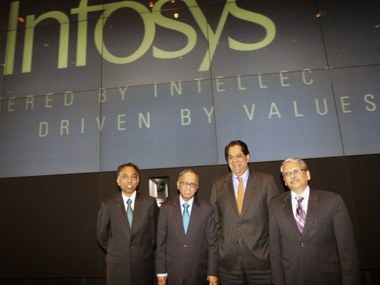Ten days into the earnings season, things are looking good. Sales are up, profits are up, and margins are only slightly down. But costs are pressing upwards, especially interest costs.
With some of the big names of India Inc announcing their results for the second quarter ended 30 September (Q2), Firstpost took an early look at result trends for 140 non-financial companies. Among those big names were Infosys, TCS, Hero Motocorp and Reliance Industries.
[caption id=“attachment_113865” align=“alignleft” width=“380” caption=“Interest costs continued to pinch the bottomlines of most companies. AFP”]  [/caption]
A caveat is in order: thanks to its sheer size, the results of Reliance Industries, more or less, determines some key aggregates for the whole group. Its sales accounted for almost 48 percent of the total aggregate sales so far.
According to our analysis, aggregate revenues (see table below) for the 140 companies rose by a sharp 28 percent for the September-ending quarter versus 21.6 percent in 2010-11 in the same quarter. However, high interest costs and commodity prices continued to take a toll on profitability as profit margins contracted year-on-year.
Big companies (those with over Rs 1,000 crore sales) were able to grow topline better than the smaller ones (those below Rs 1,000 crore). The big boys reported revenue growth of 30 percent, while smaller companies saw only half that rise - at 15.4 percent growth for the quarter. That gives us our first observation on the results: smaller companies had to work much harder to maintain revenue growth.
Impact Shorts
More ShortsTotal expenditure for all companies rose at a sharp pace of 32.7 percent, mainly reflecting the steep jump in raw material costs of 40.5 percent. However, this was mainly due to a steep rise in raw materials for Reliance, Petronet LNG and Jindal Steel & Power. For our analysis, we have considered companies whose results are available with Ace Equity until 20 October.
Our second observation is that the aggregate expenses of large companies ( see below) rose at a faster pace of 35 percent mainly due to a sharp 42 percent increase in raw material costs.Raw material expenses of smaller companies rose by 16.9 percent.
Interest costs continued to pinch the bottomlines of most companies as aggregate borrowing expenses rose by 22.2 percent. The central bank has raised interest rates 12 times since March last year in a bid to tame inflation, and this is reflected in the Q2 results of companies across the board.
Aggregate data suggest that companies with net sales of less than Rs 1,000 crore (see table below) reported a 28.4 percent increase in interest costs compared with a 19.3 percent growth in interest costs for companies above Rs 1,000 crore in net sales. Rising interest rates have hurt smaller companies much harder than larger ones.
 At the net level, while larger companies reported a 15.5 percent rise in net profits, smaller companies posted a steep 36 percent jump, up from the 5.1 percent fall in profits for the corresponding quarter a year ago.
Will these trends continue next week? Come back and find out when we release another update towards the end of next week.


)

)
)
)
)
)
)
)
)



